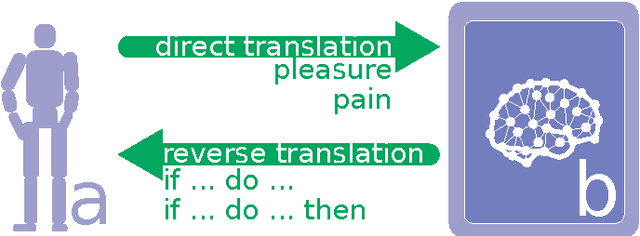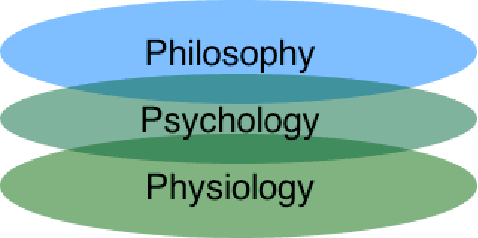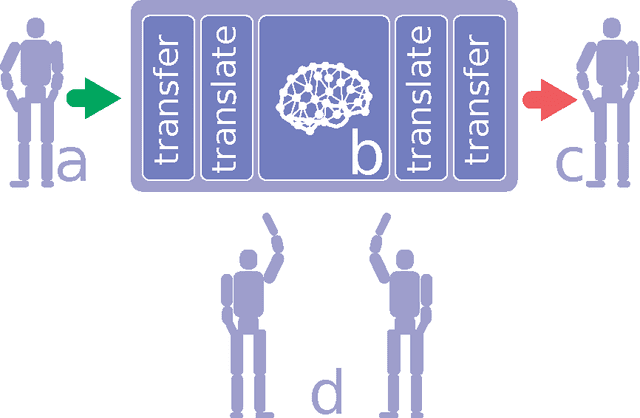Max Talanov
The BioDynaMo Project: a platform for computer simulations of biological dynamics
Jan 19, 2018Abstract:This paper is a brief update on developments in the BioDynaMo project, a new platform for computer simulations for biological research. We will discuss the new capabilities of the simulator, important new concepts simulation methodology as well as its numerous applications to the computational biology and nanoscience communities.
Neuromorphic Robot Dream
Jul 27, 2016
Abstract:In this paper we present the next step in our approach to neurobiologically plausible implementation of emotional reactions and behaviors for real-time autonomous robotic systems. The working metaphor we use is the "day" and the "night" phases of mammalian life. During the "day phase" a robotic system stores the inbound information and is controlled by a light-weight rule-based system in real time. In contrast to that, during the "night phase" information that has been stored is transferred to a supercomputing system to update the realistic neural network: emotional and behavioral strategies.
The BioDynaMo Project
Jul 10, 2016Abstract:Computer simulations have become a very powerful tool for scientific research. Given the vast complexity that comes with many open scientific questions, a purely analytical or experimental approach is often not viable. For example, biological systems (such as the human brain) comprise an extremely complex organization and heterogeneous interactions across different spatial and temporal scales. In order to facilitate research on such problems, the BioDynaMo project (\url{https://biodynamo.web.cern.ch/}) aims at a general platform for computer simulations for biological research. Since the scientific investigations require extensive computer resources, this platform should be executable on hybrid cloud computing systems, allowing for the efficient use of state-of-the-art computing technology. This paper describes challenges during the early stages of the software development process. In particular, we describe issues regarding the implementation and the highly interdisciplinary as well as international nature of the collaboration. Moreover, we explain the methodologies, the approach, and the lessons learnt by the team during these first stages.
Towards Anthropo-inspired Computational Systems: the $P^3$ Model
Jun 10, 2016

Abstract:This paper proposes a model which aim is providing a more coherent framework for agents design. We identify three closely related anthropo-centered domains working on separate functional levels. Abstracting from human physiology, psychology, and philosophy we create the $P^3$ model to be used as a multi-tier approach to deal with complex class of problems. The three layers identified in this model have been named PhysioComputing, MindComputing, and MetaComputing. Several instantiations of this model are finally presented related to different IT areas such as artificial intelligence, distributed computing, software and service engineering.
A Cognitive Architecture for the Implementation of Emotions in Computing Systems
Jun 09, 2016



Abstract:In this paper we present a new neurobiologically-inspired affective cognitive architecture: NEUCOGAR (NEUromodulating COGnitive ARchitecture). The objective of NEUCOGAR is the identification of a mapping from the influence of serotonin, dopamine and noradrenaline to the computing processes based on Von Neuman's architecture, in order to implement affective phenomena which can operate on the Turing's machine model. As basis of the modeling we use and extend the L\"ovheim Cube of Emotion with parameters of the Von Neumann architecture. Validation is conducted via simulation on a computing system of dopamine neuromodulation and its effects on the Cortex. In the experimental phase of the project, the increase of computing power and storage redistribution due to emotion stimulus modulated by the dopamine system, confirmed the soundness of the model.
Robot Dream
Mar 09, 2016
Abstract:In this position paper we present a novel approach to neurobiologically plausible implementation of emotional reactions and behaviors for real-time autonomous robotic systems. The working metaphor we use is the "day" and "night" phases of mammalian life. During the "day" phase a robotic system stores the inbound information and is controlled by a light-weight rule-based system in real time. In contrast to that, during the "night" phase the stored information is been transferred to the supercomputing system to update the realistic neural network: emotional and behavioral strategies.
 Add to Chrome
Add to Chrome Add to Firefox
Add to Firefox Add to Edge
Add to Edge